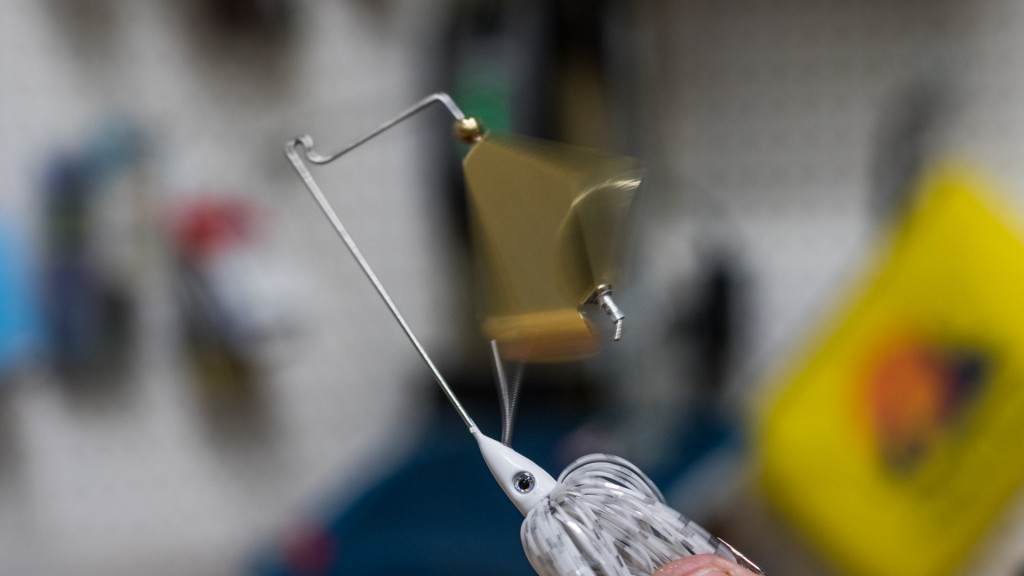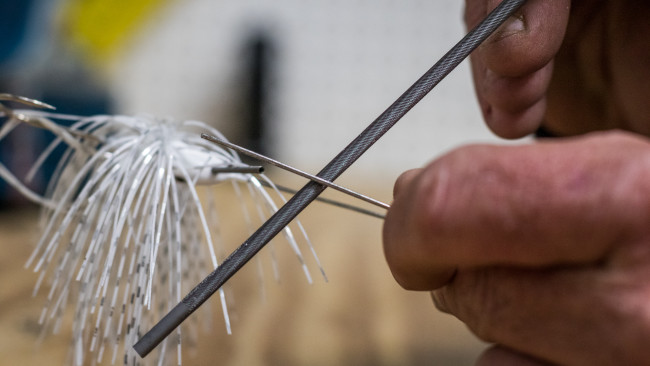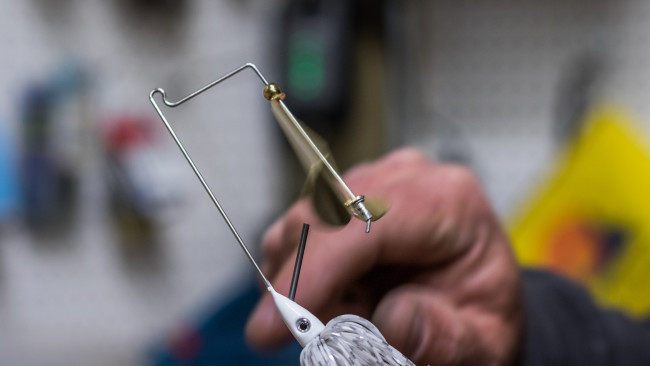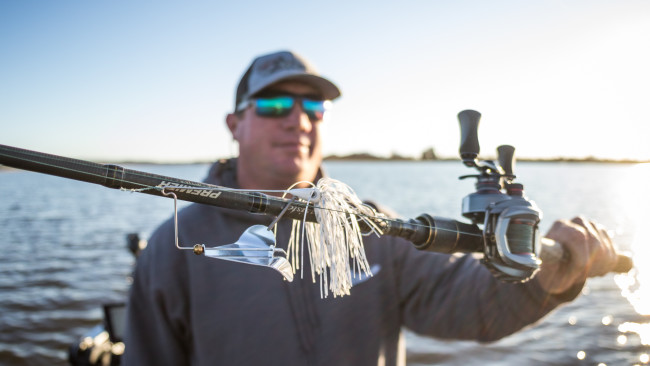How to Make a Buzzbait Squeak
The secret to putting more fish in the boat with a buzzbait

Bradley Dortch knows the value of a buzzbait, and he says it is particularly key on rivers all across the country.
“They just catch fish on rivers,” says Dortch. “If you go back and look anywhere, whether it’s Hackney at the Cup on Three Rivers, or the Tensaw River and Alabama River; it’s just a given they like it on river systems. Not that you can’t go to Toho and catch them on it, because I know some guys that have caught big ones on it. And I’ve caught some big ones on it. But it seems like on a river they eat it better than anywhere else.”
One of the key aspects of buzzbait fishing is the sound, and Dortch modifies his with a file and some pliers to get the most squeak he can.
“I’ll do it on all buzzbaits – I don’t care,” says Dortch. “The more it squeaks, the better it is. It seems like it catches bigger fish. There’s definitely something to it.”
Here’s his process:


1. Dortch starts by removing the blade and the rivet. Then, using a chainsaw file, he roughs up the back of the blade and the front of the rivet where they will rub against each other.

2. Next, he roughs up the wire of the buzzbait where the blade rides.

3. After putting the bait back together, Dortch crimps the rivet on the wire so it can’t spin, which creates maximum squeak.

The setup
Dortch modifies every buzzbait he uses so they squeak, and he mostly uses three baits: the Jenko Offspring, the Coosa Custom Baits Clacker and the Lunker Lure Buzzbait.
In clear and sunny conditions, Dortch uses chartreuse and white or white. He opts for black in overcast conditions. Blade colors vary, too: silver in clean water and gold in dirtier water or in Florida.
Dortch will sometimes use a trailer hook, depending on how well the fish seem to be taking the bait and how thick the cover is. When he uses a soft-plastic trailer, he typically sticks with a standard Zoom Split Tail in chartreuse or white.

Dortch’s tackle
Dortch bases his line choice on the cover he’s fishing.
“If I’m throwing it around scattered grass or thicker stuff I’ll throw it on 50-pound-test Berkley X9 braid,” says Dortch. “A lot of times on the river, around laydowns or something, I will throw it on 20-pound-test Berkley Trilene Big Game mono. I think when you throw it on mono you’re not as subject to take it away from them. It gives them that little extra second to get it.”
For casting in tight quarters, Dortch likes a 6-10, medium-heavy Abu Garcia Fantasista Premier. He upsizes to a 7-3 in more open water. His go-to reel is an Abu Garcia Revo STX in either a 7.3:1 or 8:1 gear ratio. Though he’s experimented with the Abu Garcia Revo Rocket and its 10.1:1 gear ratio, he’s found he prefers the slightly more traditional speeds.
“I try to reel it as slow as I can reel it, but keep it up on top,” says Dortch. “I reel it fast enough to make the blades turn and keep it up. I don’t ever burn it. A big thing is making sure that your bait doesn’t sink when you throw. You want it to be coming to you as soon as it hits. Most times, you’re throwing it upside the bank, and your best cover is right there as soon as it hits.”
Dortch loves to fish a buzzbait, and it’s been a producer for him in a lot of different tournaments and situations.
“A lot of people think it’s a great early morning bait and that’s it,” says Dortch. “That’s completely false. Some of the biggest fish I’ve caught on it I’ve caught in the middle of the day, throwing it under shady pockets and things. When they’re eating it, they’ll eat it all day.”